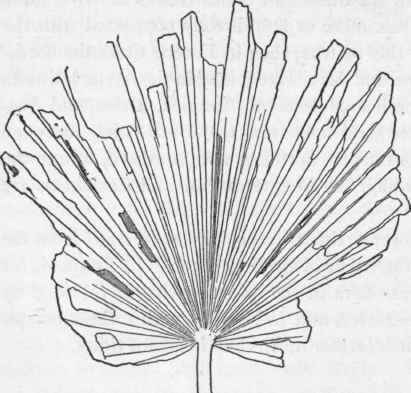Eocene Life
Description
This section is from the book "An Introduction To Geology", by William B. Scott. Also available from Amazon: An Introduction to Geology.
Eocene Life
Except for the Vertebrates, Eocene life is chiefly instructive from the manner of its distribution over the globe. Invertebrates and plants are nearly the same as modern forms, the genera, for the most part, still existing, though the species are nearly all extinct.
Plants
The Eocene flora of North America, which is very rich and varied, is found preserved in widely separated localities, - Canada, Montana, Wyoming, and Idaho. Besides Ferns and Horsetails, this flora includes some Grasses, Bananas, and many noble Palms (Fig. 304), Myrtles, Beeches, Oaks, Willows (XVI, 1), Poplars, Elms, Sycamores, Laurels, Magnolias, Maples, Walnuts, Pines, Spruces, Arbor Vitae, and the like. Even in Greenland and Alaska was a luxuriant growth of forests of a temperate character, such as could not exist there now.

Fig. 304. - Flabellaria sp., x 1/12. Green River Shales.
The European flora has a more decidedly tropical character than that of North America, and contains plants whose nearest living allies are now widely scattered, occurring in the warmer parts of America, Africa, Asia, and Australia. Cypresses, Yews, and Pines are abundant, including the Sequoia, now confined to California, and the Gingko of China and Japan. Aloes, Palms, and Screw-pines occur, mingled with the ordinary temperate forest trees, Elms, Poplars, Willows, Oaks, etc. The distribution of plants in the Eocene was thus very different from what it is at present.
Continue to:


